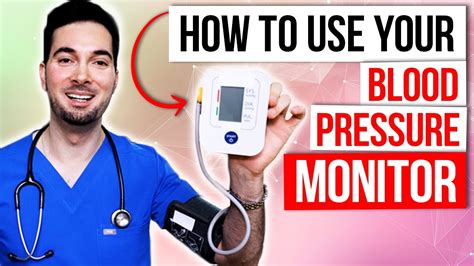Intro
The importance of understanding how to use blood pressure monitors cannot be overstated, as hypertension is a leading cause of cardiovascular disease worldwide. Blood pressure, or BP, is a critical indicator of overall health, and monitoring it regularly can help individuals take proactive steps to maintain their well-being. In this article, we will delve into the world of blood pressure monitoring, exploring the benefits, working mechanisms, and steps involved in using a blood pressure monitor effectively.
High blood pressure, or hypertension, affects millions of people globally, and if left unmanaged, it can lead to severe health complications, including heart attacks, strokes, and kidney disease. Fortunately, with the advent of blood pressure monitors, individuals can now track their blood pressure from the comfort of their own homes. This has empowered people to take control of their health, making informed decisions about their lifestyle and seeking medical attention when necessary.
The process of monitoring blood pressure is relatively straightforward, and with practice, individuals can become proficient in using a blood pressure monitor. The first step involves selecting a suitable monitor, which can be either manual or automatic. Manual monitors require the user to inflate the cuff and listen to the sounds of the blood flow using a stethoscope, while automatic monitors use advanced technology to provide accurate readings with minimal effort. Regardless of the type of monitor chosen, it is essential to follow the manufacturer's instructions and take readings at the same time each day to ensure consistency.
Understanding Blood Pressure Readings

Benefits of Regular Blood Pressure Monitoring
Regular blood pressure monitoring offers numerous benefits, including early detection of hypertension, tracking the effectiveness of treatment, and empowering individuals to make lifestyle changes. By monitoring blood pressure regularly, individuals can identify potential issues before they become severe, allowing for timely interventions and preventing long-term damage. Additionally, regular monitoring enables individuals to track the effectiveness of their treatment plan, making adjustments as necessary to achieve optimal blood pressure control.How to Use a Blood Pressure Monitor

The following steps provide a general guide on how to use a blood pressure monitor:
- Sit comfortably with your back supported and feet flat on the floor
- Place the cuff on your upper arm, ensuring it is at the same level as your heart
- Inflate the cuff to the recommended pressure, usually around 180-200 mmHg
- Deflate the cuff slowly, taking note of the systolic and diastolic readings
- Record the readings and date in a log or diary for future reference
Tips for Accurate Readings
To ensure accurate blood pressure readings, it is essential to follow a few simple tips. First, use the correct cuff size, as a cuff that is too small or too large can lead to inaccurate readings. Second, take readings at the same time each day, preferably in the morning and evening, to establish a consistent routine. Third, avoid talking or moving during the reading, as this can affect blood pressure levels. Finally, take multiple readings and calculate the average to ensure accuracy.Common Challenges and Solutions

Some common challenges and solutions include:
- Inaccurate readings: Check the cuff size, ensure proper calibration, and take multiple readings
- Cuff size issues: Use a cuff that is suitable for your arm size, and consider consulting a healthcare professional for guidance
- Difficulty using the monitor: Practice using the monitor regularly, consult the manufacturer's instructions, and seek guidance from a healthcare professional if necessary
Importance of Lifestyle Changes
In addition to regular blood pressure monitoring, lifestyle changes play a critical role in maintaining optimal blood pressure levels. A healthy diet, regular exercise, stress management, and adequate sleep are all essential for maintaining healthy blood pressure. Individuals can make several lifestyle changes, including: * Eating a balanced diet rich in fruits, vegetables, and whole grains * Engaging in regular physical activity, such as walking or jogging * Practicing stress-reducing techniques, such as meditation or deep breathing * Getting adequate sleep, aiming for 7-8 hours per nightConclusion and Next Steps

We invite you to share your thoughts and experiences with blood pressure monitoring in the comments below. Have you encountered any challenges or successes with monitoring your blood pressure? What lifestyle changes have you made to maintain optimal blood pressure levels? Your feedback and insights are invaluable in helping others take control of their health.
What is the normal blood pressure range?
+A normal blood pressure reading is typically around 120/80 mmHg, although this can vary depending on factors such as age, fitness level, and overall health.
How often should I monitor my blood pressure?
+It is recommended to monitor blood pressure at least twice a day, preferably in the morning and evening, to establish a consistent routine.
What are the benefits of regular blood pressure monitoring?
+Regular blood pressure monitoring offers numerous benefits, including early detection of hypertension, tracking the effectiveness of treatment, and empowering individuals to make lifestyle changes.
